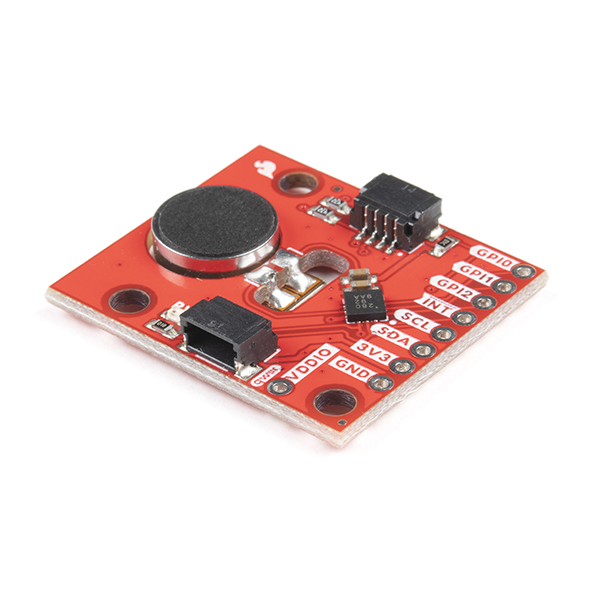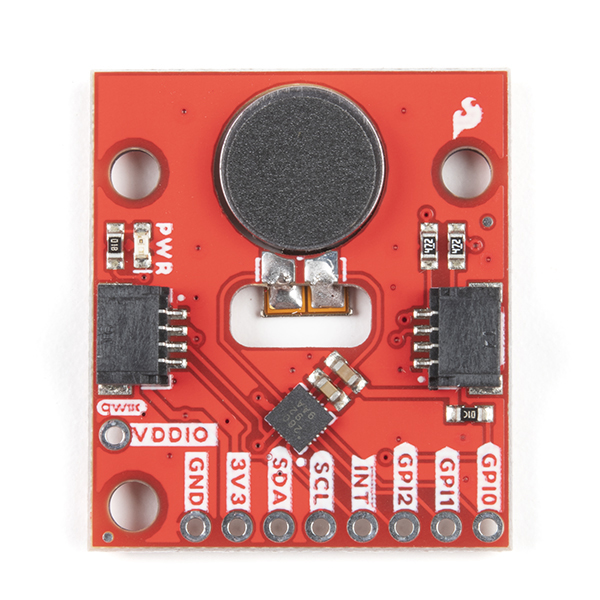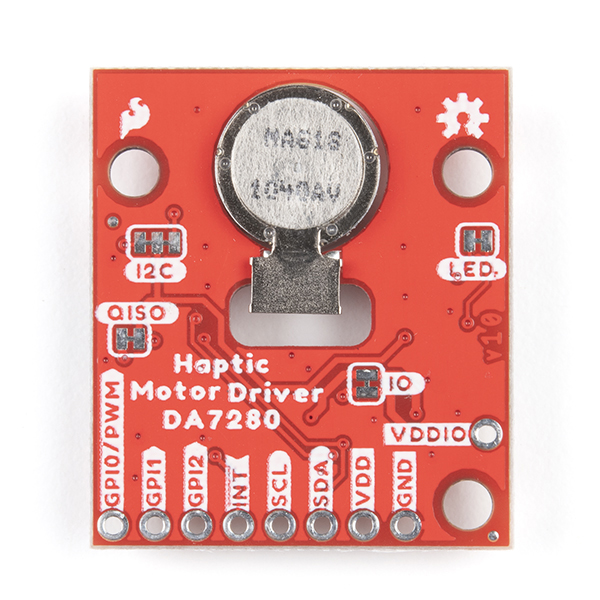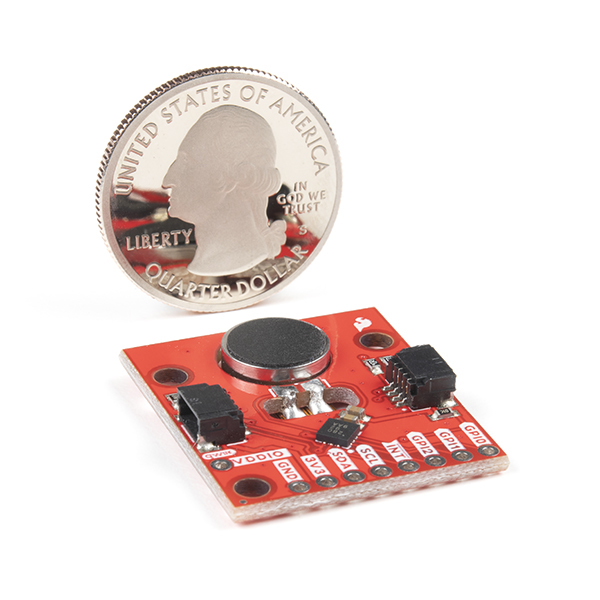SparkFun Qwiic Haptic Driver - DA7280
The SparkFun Qwiic Haptic Driver includes an itty-bitty, Linear Resonant Actuator (LRA) vibration motor and Dialog Semiconductor's DA7280 motor driver IC for applications that require haptic feedback.
Control the vibration motor with the DA7280 via I2C, PWM, or a combination of three general purpose input pins. Utilizing our handy Qwiic system, no soldering is required to connect it to the rest of your system. However, we still include 0.1"-spaced PTH pads in case you prefer to use a breadboard to access the driver's I2C, power, interrupt, and general purpose input pins on the edge of the board.
This board is great for projects that require a physical indicator whenever an event is triggered. Add it to your remote control to notify you when your robot has hit a wall. Combine it with an accelerometer to remind you to correct your posture. Or use it with a distance sensor to alert you when a ninja is walking up to you at your desk.
The SparkFun Qwiic Connect System is an ecosystem of I2C sensors, actuators, shields and cables that make prototyping faster and less prone to error. All Qwiic-enabled boards use a common 1mm pitch, 4-pin JST connector. This reduces the amount of required PCB space, and polarized connections mean you can’t hook it up wrong.
- 2x Qwiic Connection Ports
- 1x Built-in LRA Vibration Motor
SparkFun Qwiic Haptic Driver - DA7280 Product Help and Resources
Qwiic Haptic Driver DA7280 Hookup Guide
April 29, 2021
The Qwiic Haptic Driver includes an itty-bitty, Linear Resonant Actuator (LRA) vibration motor and Dialog Semiconductor's DA7280 motor driver IC for applications that require haptic feedback.
Core Skill: Robotics
This skill concerns mechanical and robotics knowledge. You may need to know how mechanical parts interact, how motors work, or how to use motor drivers and controllers.
Skill Level: Rookie - You will be required to know some basics about motors, basic motor drivers and how simple robotic motion can be accomplished.
See all skill levels
Core Skill: Programming
If a board needs code or communicates somehow, you're going to need to know how to program or interface with it. The programming skill is all about communication and code.
Skill Level: Rookie - You will need a better fundamental understand of what code is, and how it works. You will be using beginner-level software and development tools like Arduino. You will be dealing directly with code, but numerous examples and libraries are available. Sensors or shields will communicate with serial or TTL.
See all skill levels
Core Skill: Electrical Prototyping
If it requires power, you need to know how much, what all the pins do, and how to hook it up. You may need to reference datasheets, schematics, and know the ins and outs of electronics.
Skill Level: Rookie - You may be required to know a bit more about the component, such as orientation, or how to hook it up, in addition to power requirements. You will need to understand polarized components.
See all skill levels
Comments
Looking for answers to technical questions?
We welcome your comments and suggestions below. However, if you are looking for solutions to technical questions please see our Technical Assistance page.
Customer Reviews
No reviews yet.





Is there any example code using the addSnippet() and playFromMemory() functions of the Arduino library?
Does anyone know how “strong” this haptic driver is? Eg. how it compares to the Taptic Engine in an iPhone or haptics on Android phones… it looks a lot smaller so I have my doubts about how useful it would actually be